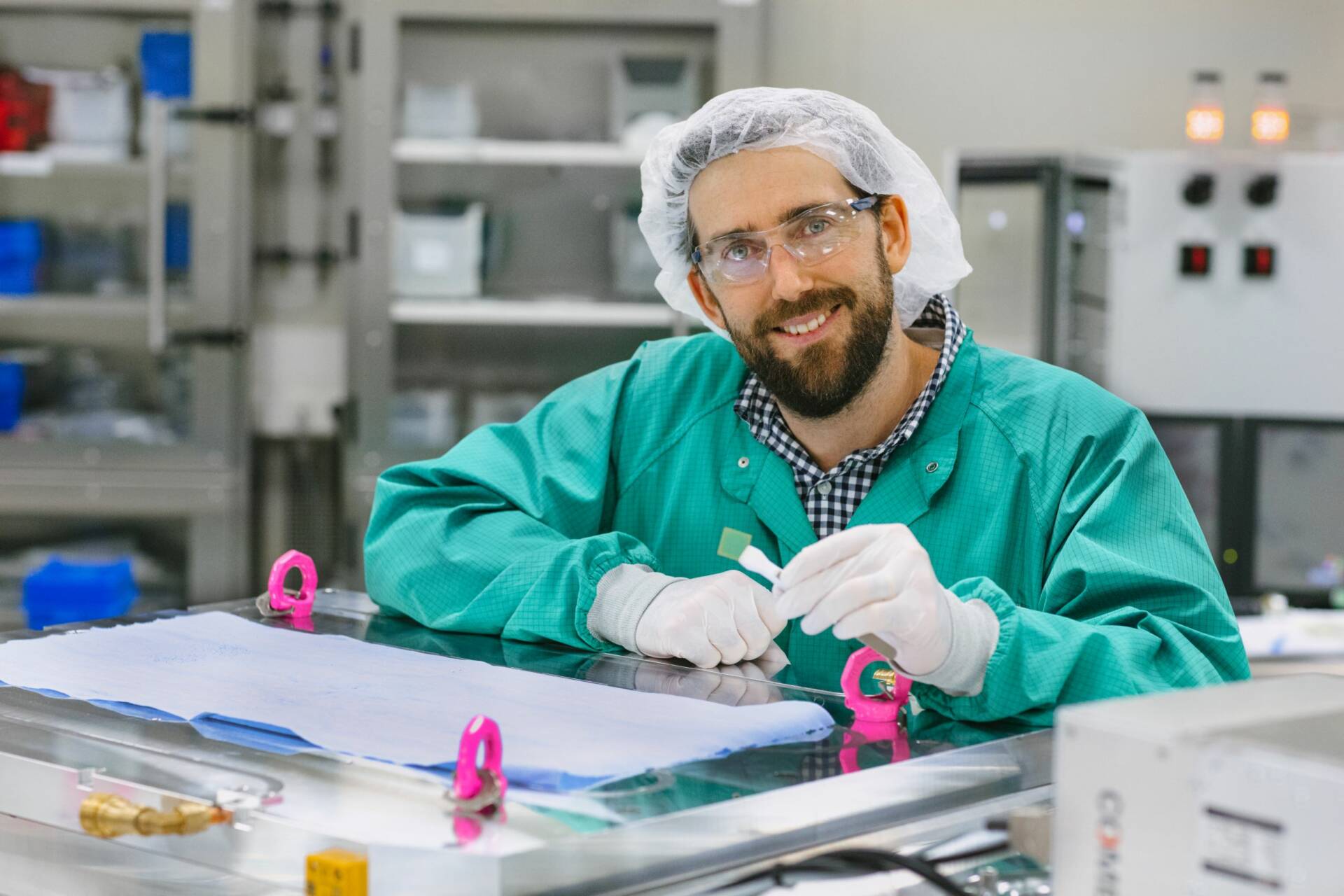Solar cells first caught my interest as a high school student, growing up in a small town in the Snowy Mountains of Australia. I was intrigued by the solar battery system that my physics teacher had installed, and I found that I had an affinity for the science of solar cells. I still find it amazing that you can stick a thin sliver of silicon out in the sun and generate electricity; it’s extraordinary.
Even when I went to university to study, solar cell technology was quite fringe. People didn’t really know about it. Today, it is a multibillion-dollar industry, the fastest growing deployed electricity-generation technology in the world that continues to grow at an extraordinary rate. I remember when solar energy was the most expensive way to generate electricity. Now, it is the cheapest, and the technology is still improving.
As a research scientist in Stefaan De Wolf’s lab at KAUST, my work is focused on an emerging technology called a tandem solar cell. We essentially make a silicon solar cell and then add another solar cell made of a semiconductor called perovskite on top of it. The perovskite absorbs blue light best while the silicon absorbs red light best. Combined, they can capture more of the energy in the sunlight than either cell can by working alone.
A tandem cell needs a physical electrical connection between the two solar materials. I develop and test materials that can form that connecting layer, with the aim of identifying materials that maximize the efficiency and working lifetime of the tandem device. In the photo, I am holding a thin film of nanocrystalline silicon that is ready to be tested as the connecting layer.
When I first joined Stefaan’s group five years ago, he was only establishing his labs at KAUST. It was great to be a part of the set up of the lab and all that entails in terms of navigating a research direction. Stefaan is very open and collaborative; the kind of guy who gets your opinion and appreciates it. We started out making silicon cells that converted solar energy into electricity with less than 20 percent efficiency. Today, we are making tandem solar cells reaching up to around 30 percent efficiency.
Silicon perovskite tandem technology is starting to get a lot of interest in the solar cell manufacturing community. I’d like to stay at KAUST for at least another year or two, and from there maybe get a job in industry. That would be a great next step for me.

